Mercedes-Benz EQS & Audi A6 e-tron Concept: First Impressions
With its 700+km range, the Mercedes-Benz EQS has set the bar high for next-generation luxury EVs. Audi, meanwhile, has accepted Stuttgart’s challenge with its new PPE (Premium Platform Electric), which will form the base for the future A6 e-tron.

With its 700+km range, the Mercedes EQS has set the bar high for next-generation luxury EVs. Audi, meanwhile, has accepted Stuttgart’s challenge with its new PPE (Premium Platform Electric), which will form the base for the future A6 e-tron.
There was a time when the battle of technological supremacy between the three German premium manufacturers was largely resolved by the Leistungskrieg (the war of performance). Through their respective high-performance branches – Audi RS, BMW M, and Mercedes-AMG – Ingolstadt, Munich, and Stuttgart slugged it out with increasingly powerful engines, delivering frightening acceleration and performance, which were quite closer to those of the real supercars but came in more conventional body shapes, such as saloons and wagons.
That era, even though not too far from now, seems remote and prehistoric today. Because all of a sudden, the battleground has changed – we no longer live in the world marked by the roars of internal combustion engines but one that’s defined by the hiss of the increasingly popular electric powertrain. And in this changed battleground, the Wille zur Macht (will to power) of the three powerhouses of the luxury car world has shifted entirely towards offering more kilometres on battery power. But the essence of all this still remains the same – the race continues to be as heated as ever.
Welcome to the 700 Club
At this point, it’s necessary to mention that of the trio, BMW seems to be the least inclined to be dragged into the rat race, but we’ll have to wait and see how long this resistance lasts. We recently interviewed Frank Weber, Director, R&D, BMW, and this is what he said: ‘With the iX, we offer over 600 kilometres of range. In our opinion, the industry will settle on this figure, as going further will not bring new customers.’
Now, this prediction was rendered meaningless in a resounding way by Mercedes. How? Well, with the EQS, of course, which has set the bar at 770kms. So, what about Audi? Obviously, it wasn’t going to be left behind. So, it readily accepted the challenge and came up with a concept car, the A6 e-tron, which will go into production between 2022 and 2023, and, thanks to the PPE (Premium Platform Electric), developed in collaboration with Porsche, it promises to offer ‘over 700kms of range’. It’s not that the war between the manufacturers has resumed – it couldn’t have, for the truce was an illusion, which only served to shift the aim.
SETTLING IN THE FUTURE – MERCEDES-BENZ EQS
The Mercedes EQS is one of those cars that’s difficult to talk about, for you don’t know where to start. Because it’s not just any old electric car for Stuttgart but a flagship that’s a harbinger of an entire fleet. In every area – from the platform to the battery and from autonomous driving (conditional) to the man-machine interface – the EQS proudly assumes its flagship role, something that the S-Class has been doing for decades. Now, we wouldn’t call it heresy, given the fact that it seems almost inevitable that electrification is the future of mobility.
Impressive Performance
The EQS, which you see in its innovative forms here, is not a show car but a finished production model, which will arrive in dealerships in August in two variants – the 450, with a rear engine of 328bhp and 568Nm (0 – 100km/h in 6.2 seconds, with a speed limit of 210km/h), and the 580 4Matic, with a second motor at the front and a total of 516bhp and 855Nm (0 – 100km/h in 4.3 seconds and a max speed limited to 210km/h).
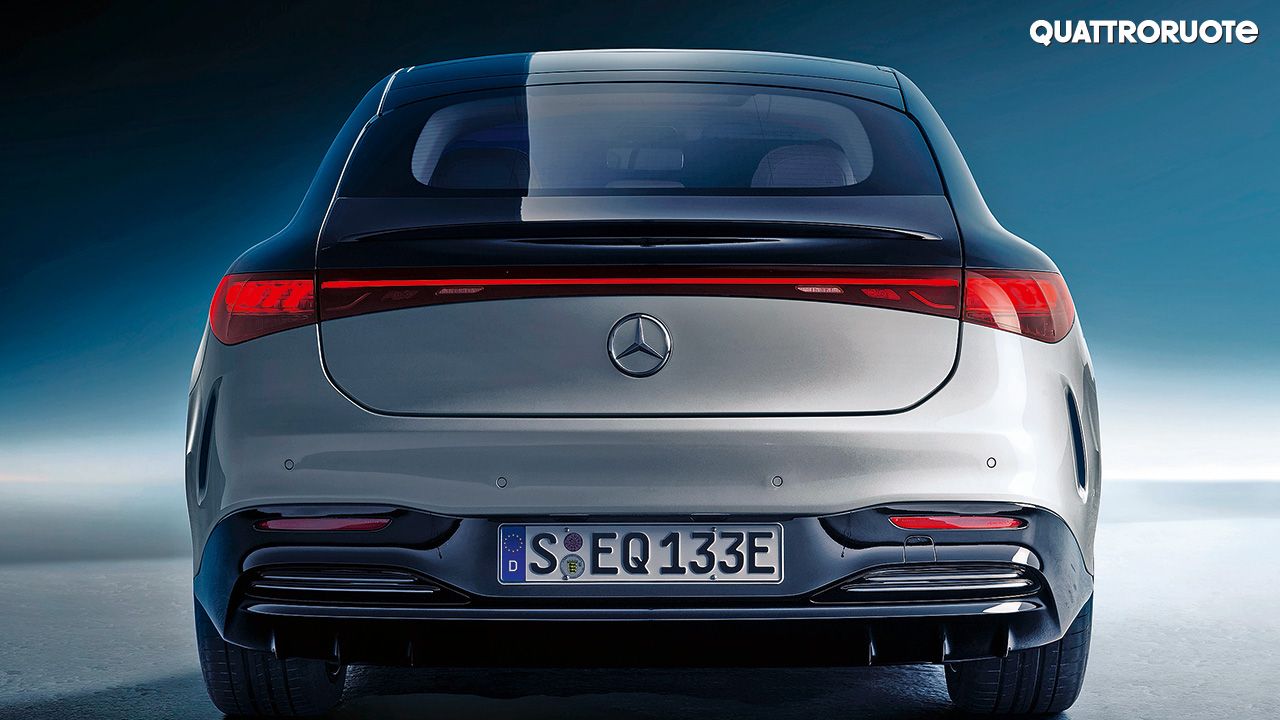
Later, it’ll also be available in the AMG variant, with a max power of about 750bhp, which, incidentally, is the same as that of the Porsche Taycan Turbo S. Very impressive claims, then, in terms of power and performance, which counterbalance its sophisticated design. Its continuous arc silhouette, defined by a single line that goes from the nose to the tail, was made possible by the adoption of a dedicated architecture – the EVA, which was designed keeping in mind the reduced size of the front mechanical parts. This stylistic choice also has profound implications in terms of practicality and aerodynamics – with its 0.20Cd, the EQS gives Mercedes back the title of the most aerodynamically efficient car in the world.
Low Cobalt Batteries
The EQS will be offered with a choice between two batteries – a 90kWh and a 107.8kWh –both of which will be paired with a 400V electrical system. Also, both batteries will be available with both models of the EQS – the 450 and 580 4Matic. Their management software can be updated over the air. The lithium-ion batteries have a classic nickel-cobalt-manganese cathode, but the proportion of the three elements is 8:1:1 – cobalt, which impacts the environment the most, has been reduced to only 10%. This energy capsule can accept a charging power of up to 200kW in direct current, which translates into the possibility of gaining 300km of autonomy in 15 minutes.
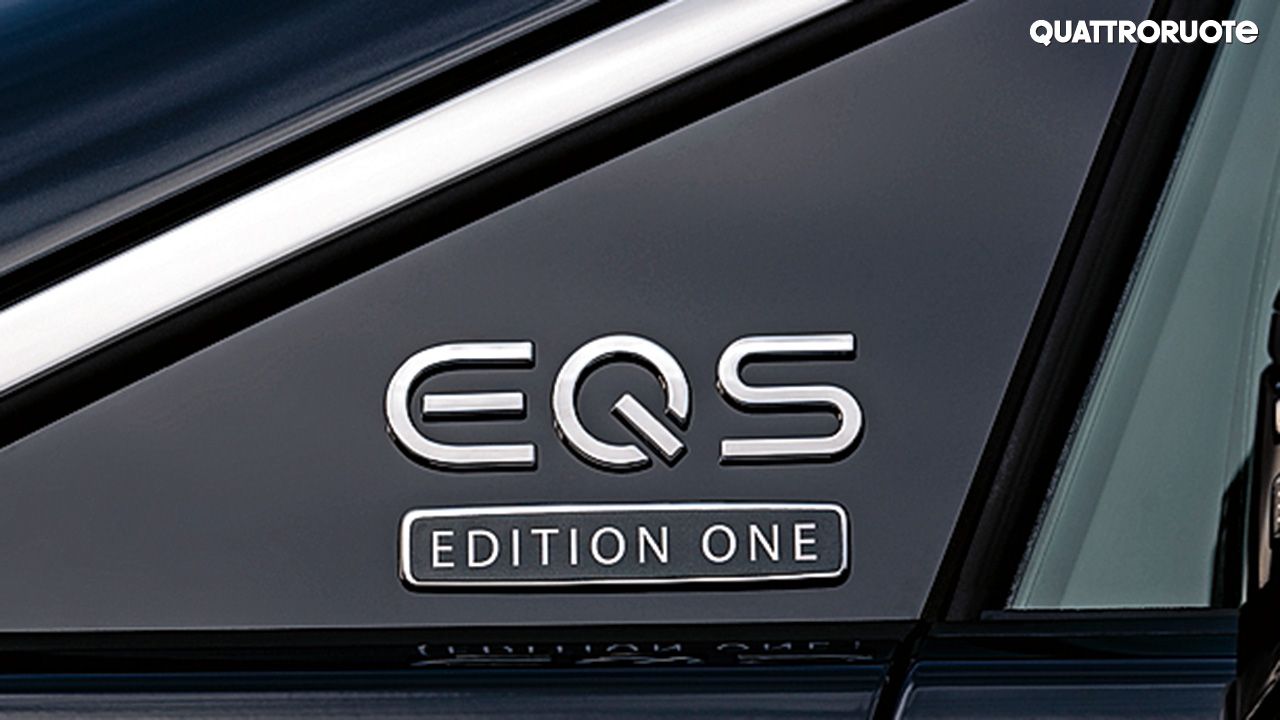
Now, in the EQS, charging is a complex operation, involving numerous vehicle functions. For instance, the navigation system, which is equipped with Electric Intelligence. The latter enables the system to plan the most efficient route, including stops for charging, based on parameters such as topography, temperature, and speed, and to modify it according to traffic and driving style. And that’s not all, the Mercedes me Charge management system enables even more advanced applications. In Japan, where the electric grid allows it, the EQS will be equipped from launch with the vehicle-to-grid function, which will enable it to return energy to the grid.
Other innovative options include Green charging – it ensures that an amount of renewable energy equal to the energy used for charging is fed back into the grid – and Plug & Charge, which is a unified and automatic digital payment system that covers 500,000 charging points in 31 countries (200,000 in Europe) and offers a year’s free Unlimited subscription to Ionity’s fast-charging stations.
Hyperscreen and more
Great innovations in terms of hardware and software have also made it possible to make the EQS unique in terms of digitalization. Take, for instance, the rear-wheel steering, which as standard comes with an angle of 4.5°, but it can be increased to 10° through an over-the-air upgrade at the customer’s discretion (resulting in a turning diameter of 10.9 metres, which is less than that of the A-Class). Automated valet parking is another such example, which allows the car to be parked without human intervention in connected garages. The Drive pilot allows the EQS to drive in conditionally automated mode at the speed of up to 60km/h in dense traffic or in queues (initially on the German Autobahn).
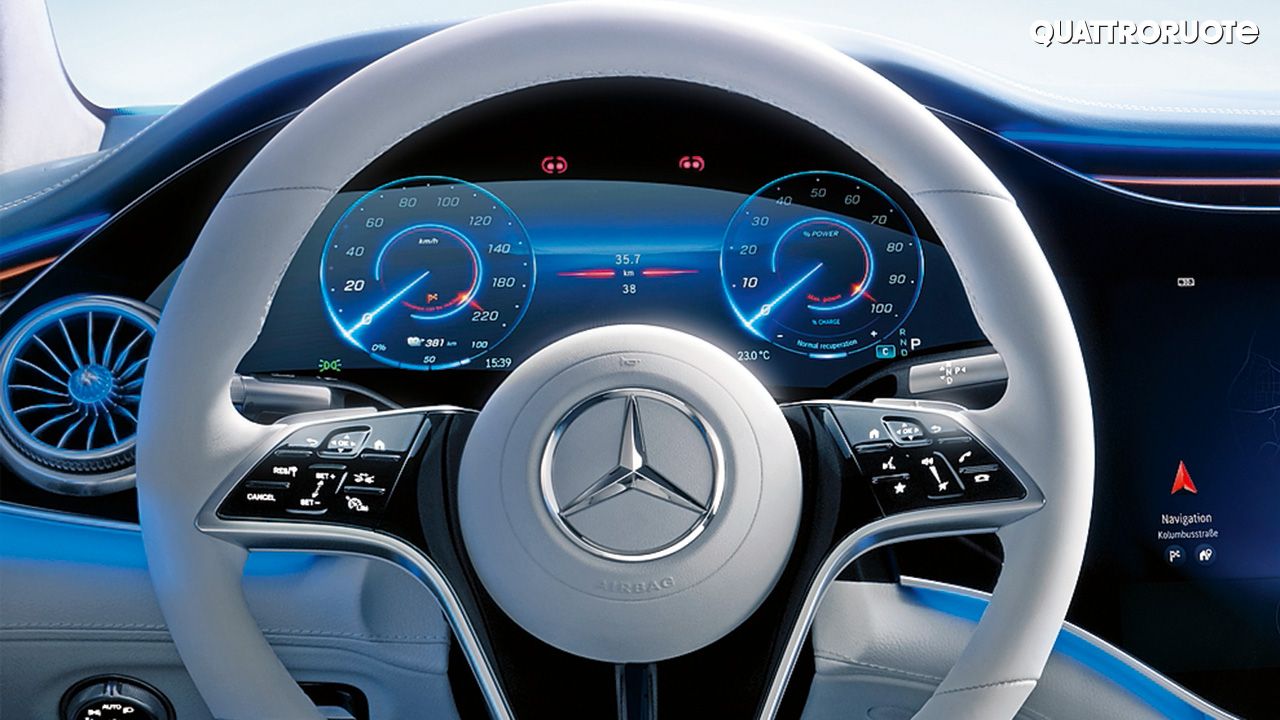
The biggest achievement of the digitization process, however, is the Hyperscreen – a curved screen unit that runs almost from A-pillar to A-pillar (1,410mm wide) and houses three screens: a 12.3-inch LCD for instrumentation, a 17.7-inch OLED for infotainment, and a 12.3-inch OLED for the passenger. A characteristic of the interface is what’s called the zero layer, which ensures that the most important applications are always there on the top, without the need for digital or voice commands.
In most situations, navigation, phone, and media are, of course, always there on top, but to give a more specific example, the EQS can figure out, thanks to the GPS system, when it’s about to encounter a ramp or a speed breaker and, as a result, brings the lift function to the foreground. All these features that seem to us today technological wonders will one day become a necessity that we won’t be able to do without. Isn’t that amazing?

The grille is replaced by the Black panel (above). The cooling function is gone and sensors for autonomous driving have been added. The EQS offers three levels for energy recovery, which can be adjusted using the steering wheel paddles. Its proximity sensors pull out the door handles when they sense the owner’s proximity, and when the owner further approaches, they open the doors. Below: the Hyperscreen.
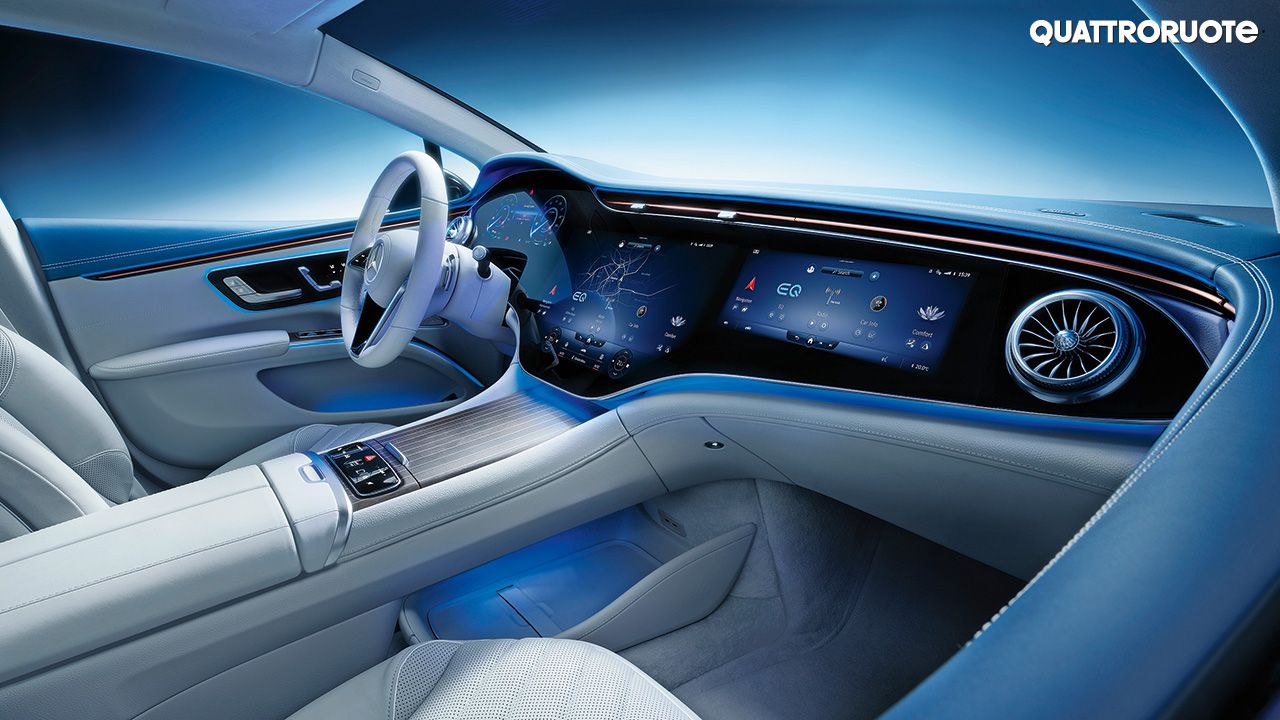
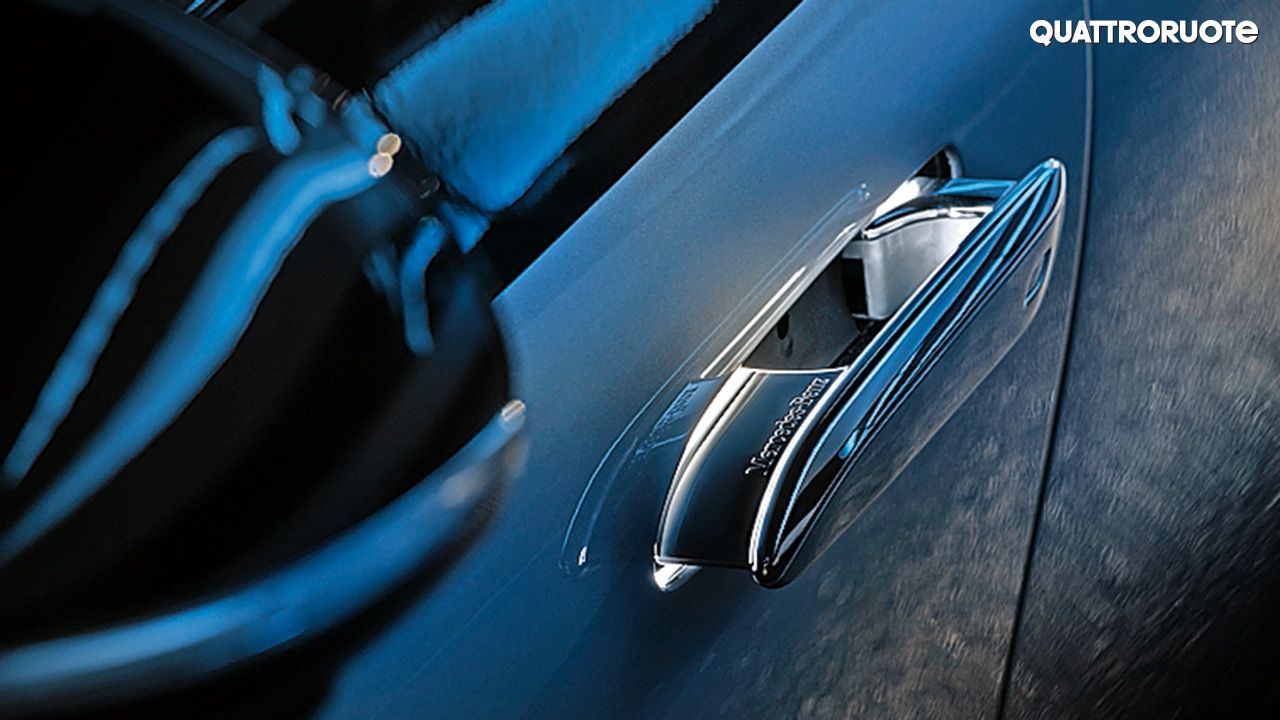
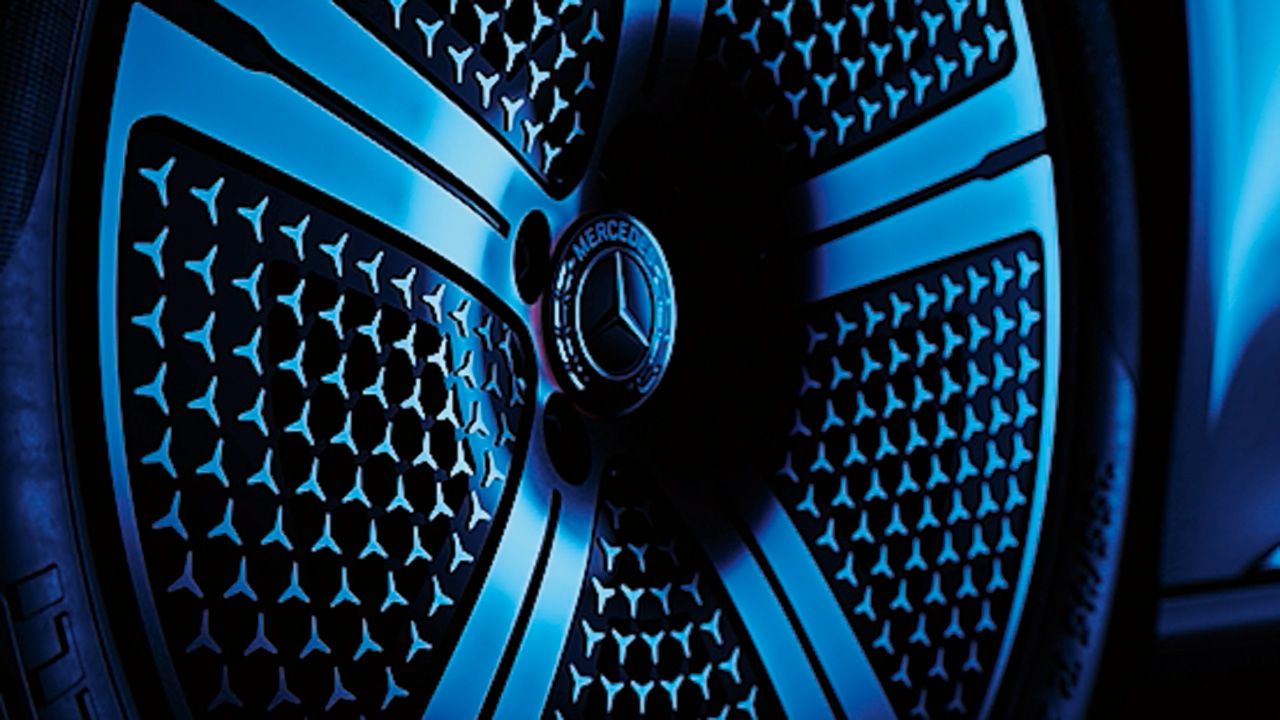
The world record of 0.20Cd, essential for a range of 770kms, has been achieved through brilliant attention to details, such as the development of solid wheel rims. The Sensual design philosophy, which has been pursued for years by style director Gorden Wagener, has also been translated into fewer connections between body panels to achieve a sense of continuity of visual lines.
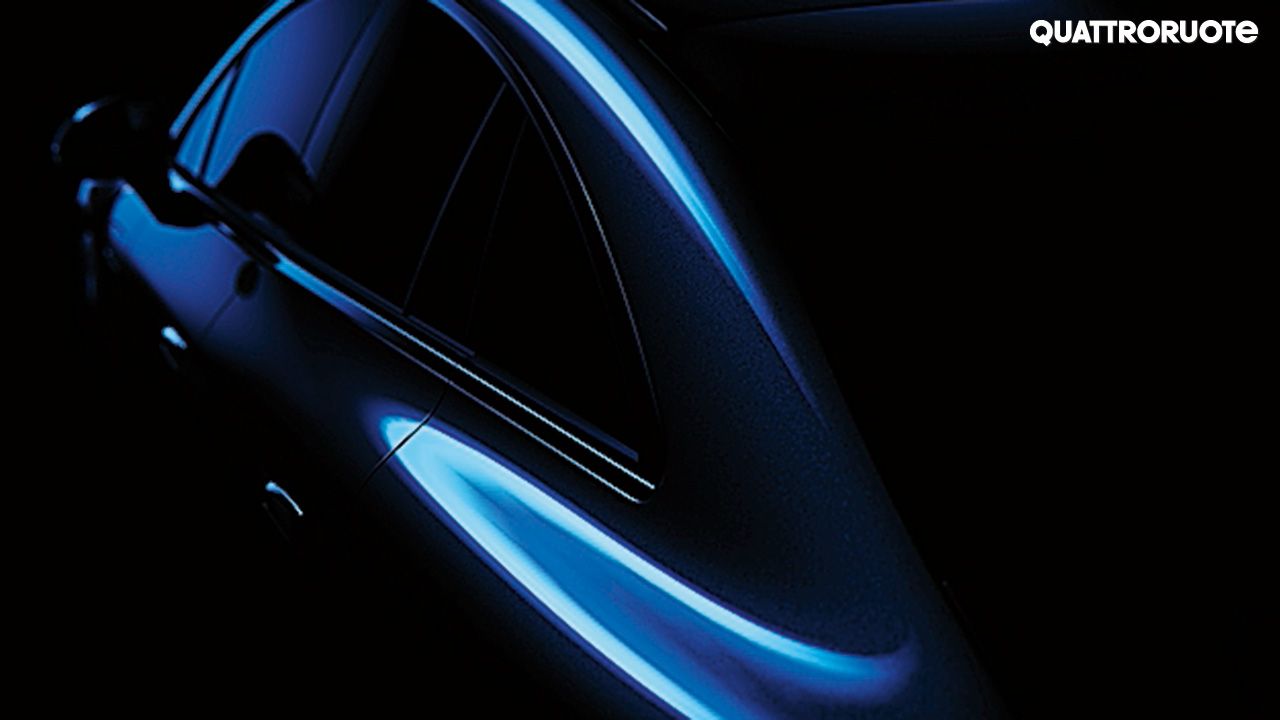
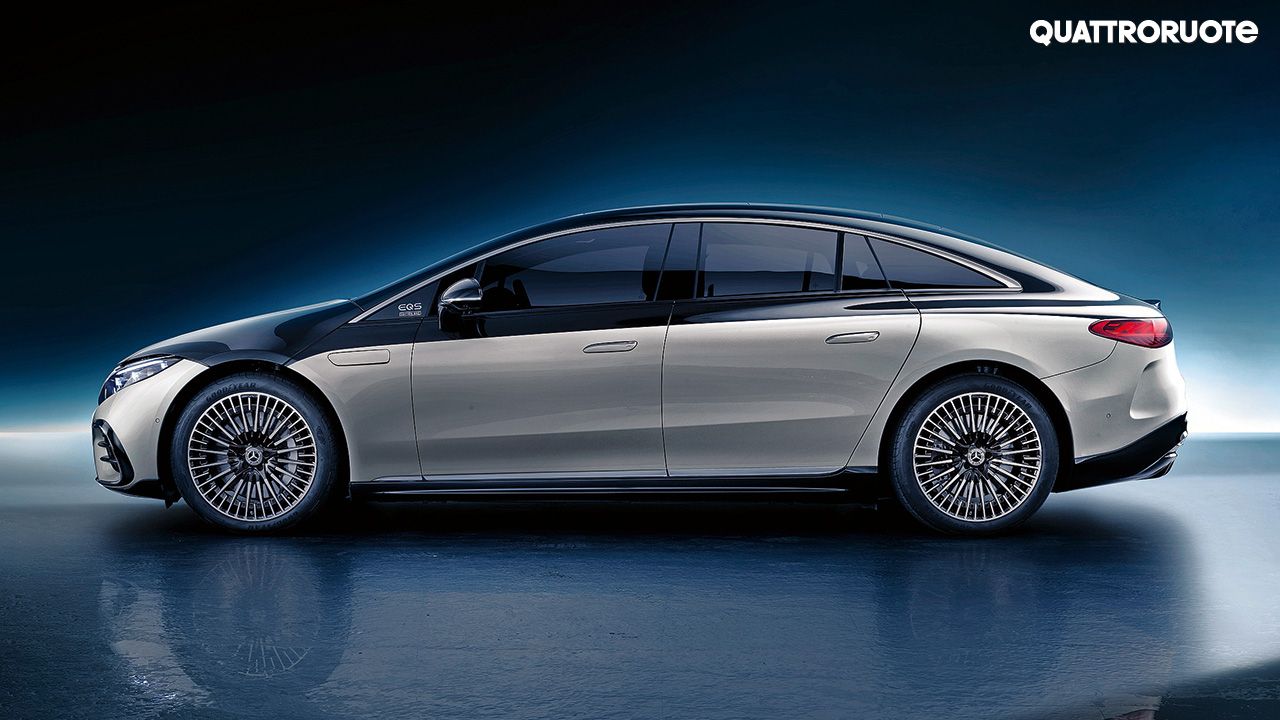
Above: the proportions, with a short nose and a wide wheelbase, of the EVA architecture. Below: the three-dimensional light propeller inside the rear light cluster. The headlamps also act as digital lights by projecting trajectory indications (for instance, bottlenecks caused by roadworks) on the asphalt through a system of micro-mirrors with a resolution of 2.6 million pixels.


ELEGANCE RESTORED – AUDI A6 E-TRON
So, we were saying something about 700. Oh, yes, the new benchmark, the new reference for the driving range of high-end electric cars seems to hover over this number. After the announcement of 770kms of the Mercedes EQS, we learnt about the Audi A6 e-tron. And we must say that those ‘over 700 kilometres’ of autonomy that it claims to offer make it, like the Stuttgart flagship, a next-generation EV.
So, how was this made possible? Well, like the EQS, Audi also used a whole new platform called PPE (Premium Platform Electric), which was developed in collaboration with Porsche. This platform was designed especially for electric vehicles and, therefore, is able to accommodate batteries of up to 100kWh capacity. Theoretically, it’s suitable for a diverse range of models, such as sedans and SUVs, irrespective of the battery size and length of the wheelbase.
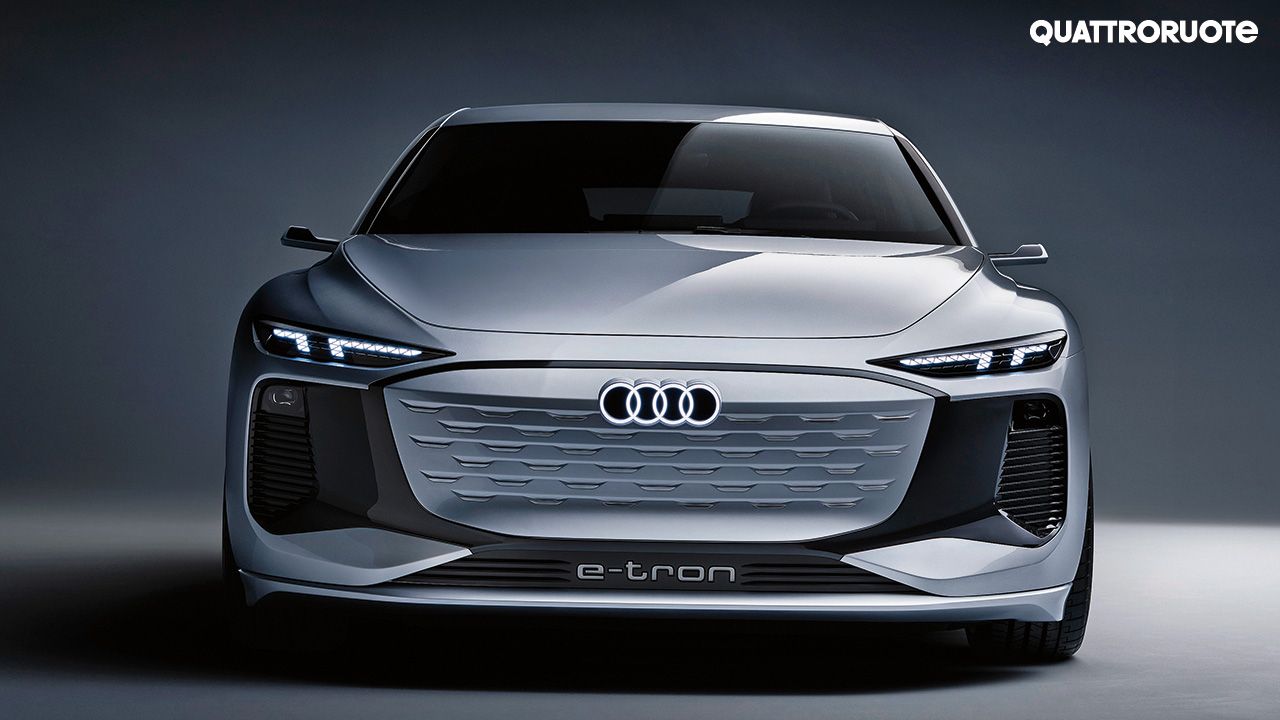
Another feature of the platform is that it allows for the possibility of developing rear-wheel-drive cars (the basic range, with an ability to do a 0 – 100 km/h sprint in less than seven seconds) or all-wheel drive (the high-performance variant, which would be able to do the same sprint in under four seconds), with the simple addition of an electric motor at the front axle. Precisely the latter, however, is the basis of the A6 e-tron concept, which delivers a combined power of 476hp and 800Nm.
But there is another key aspect of the PPE platform – its 800V charging technology. A feature that ensures charging with a maximum input power of up to 270kW, ensuring extremely reduced charging times. According to Audi, 300kms can be achieved in just ten minutes of charging, and in 25 minutes, it can be charged from 5% to 80% of its capacity.
Real All-Rounder
The intrinsic design flexibility of native electric architectures allows the possibility of planning in detail, and well in advance, entire families of models that can be based on it, and the PPE is no exception. Consequently, Audi has already announced a zero-emission strategy similar to that of Mercedes, which, thanks to the PPE, will range from the A6 segment and the lower ones (A4 and Q5, to be clear, which account for most of the brand’s sales) to the higher flagship segment (where today there is the A8). First, the Q6 e-tron SUV will be unveiled in its production guise in the second half of 2022. And a few months later, it will be followed by the final version of the A6 e-tron concept.
Return to Order
As a concept car, let’s not forget, the A6 e-tron also fulfils its role as an indicator of the direction the brand will most likely follow in terms of styling and design. And frankly, it’s good news. The A6 e-tron is 4,960mm long, 1,960mm wide, and 1,440mm high and is characterised by a coupe-like tail, which is more similar to that of the A7 Sportback than to the layout of a conventional three-box design. This vision of electric sedan not only has a brilliant aerodynamic coefficient (0.22) but also a design that after years – during which the stylistic vocabulary was populated with aggressive words such as cuts, edges, and other strong graphic elements – marks a return to a more uniform and elegant treatment of surfaces and transitions between them.
Perhaps, the most striking proof of this new course is the design of the rear fender, which in Audi’s language means the presence of quattro all-wheel drive. And on this A6 e-tron, it becomes an inevitable consequence of the natural curvature of the side surface. And no, it’s not just a question of aerodynamics – it’s a manifesto of style.

Above: the black insert under the doors indicates the presence of the battery and will become a signature feature for Audi e-trons, as will the rear-view cameras that replace the mirrors. Below: front Matrix LEDs can project content (like video games) in front of a wall when the car is charging. Also, the three-dimensional rear OLEDs.
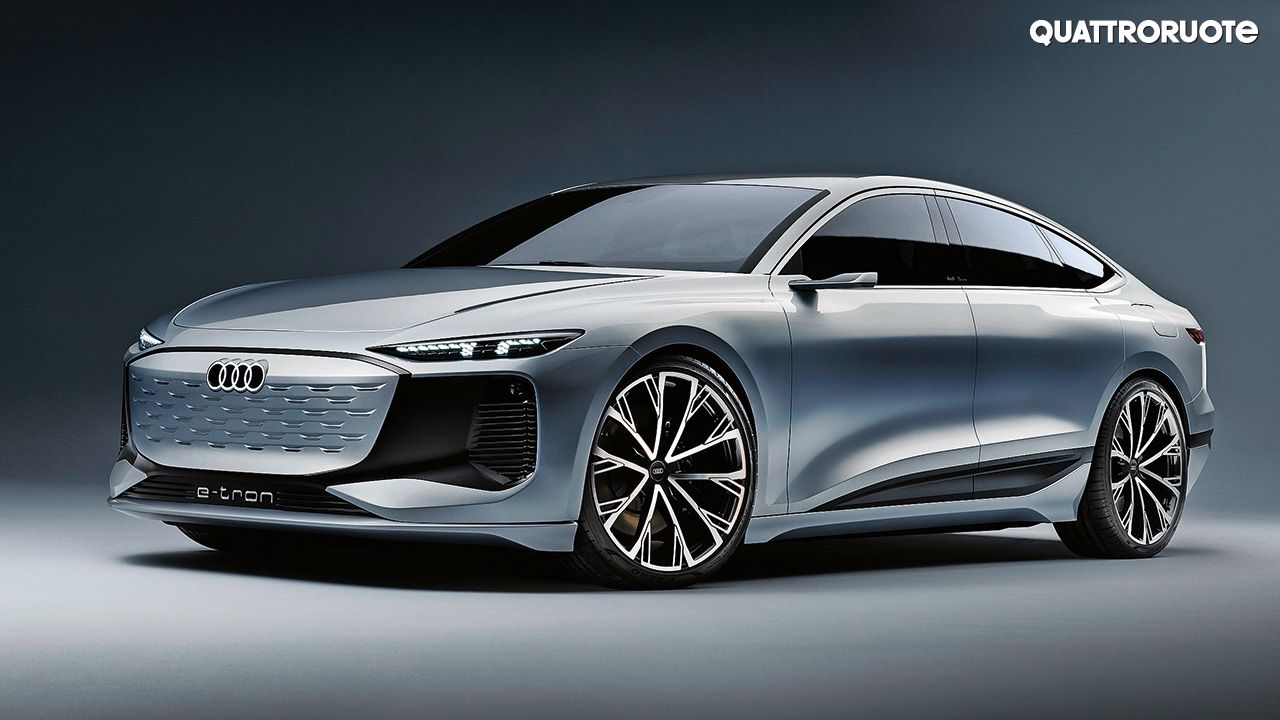
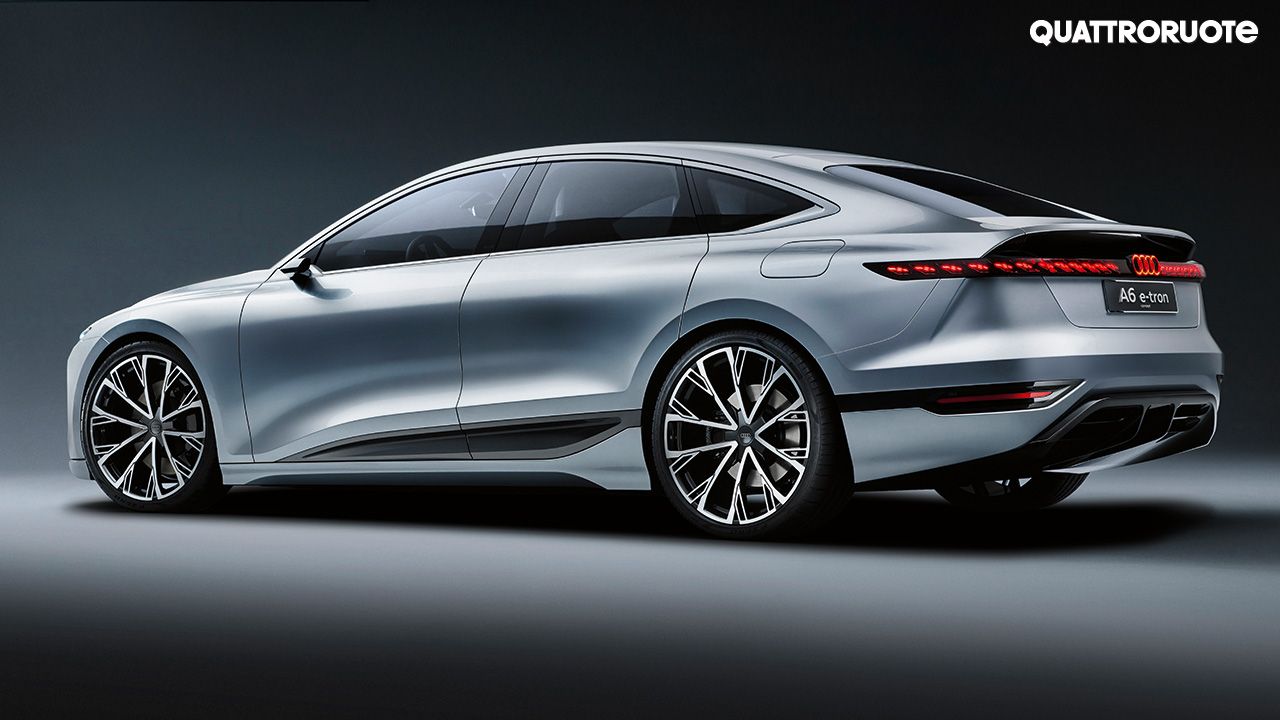
© Riproduzione riservata
Read more:
Mercedes-Benz MBUX Hyperscreen: Preview





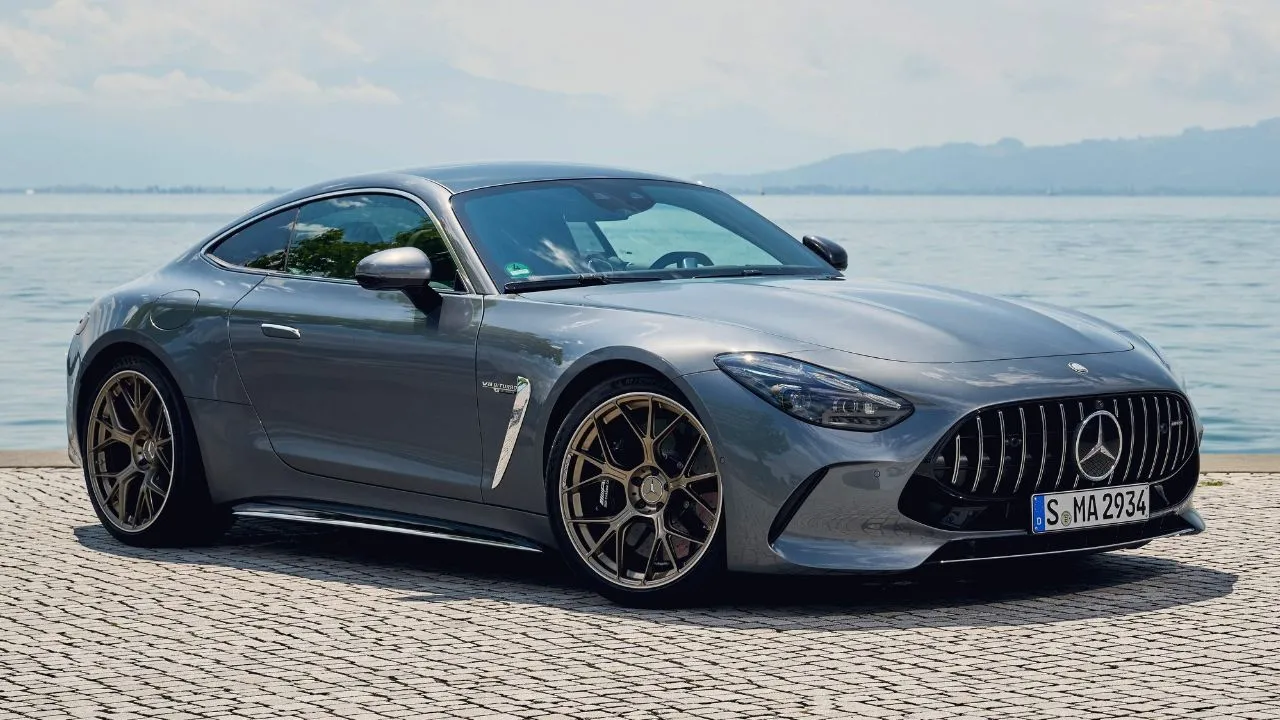
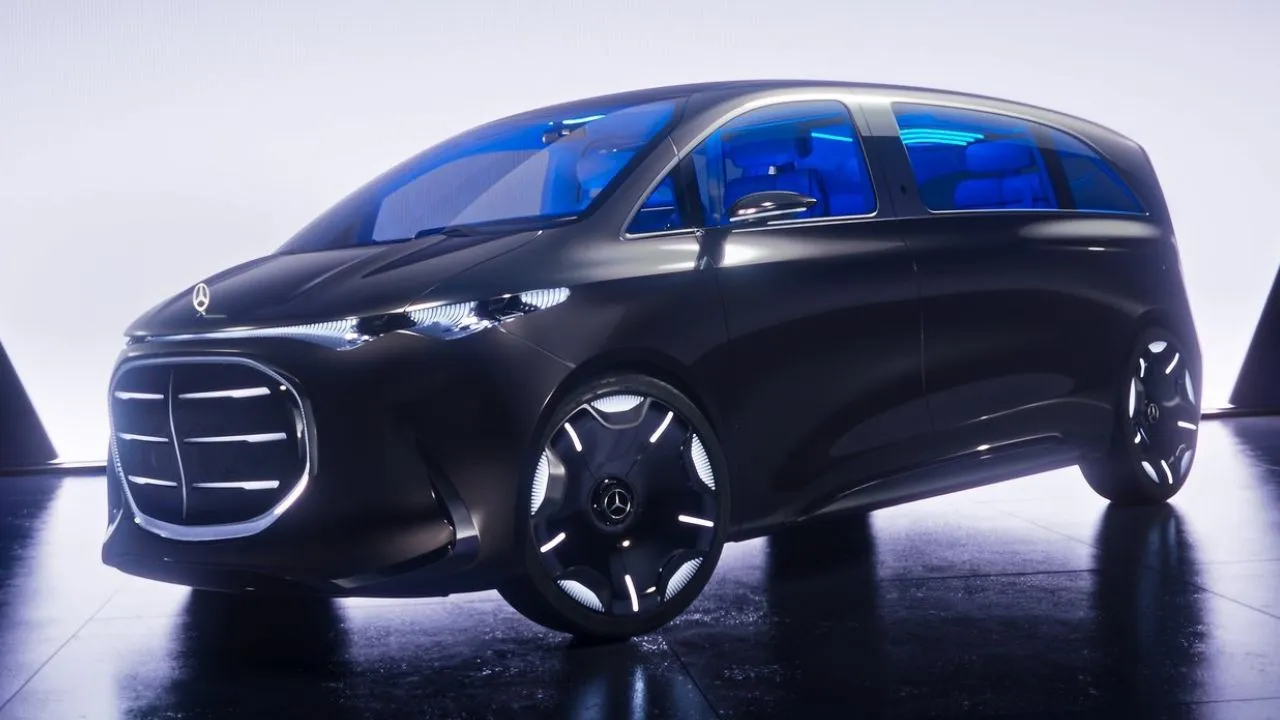
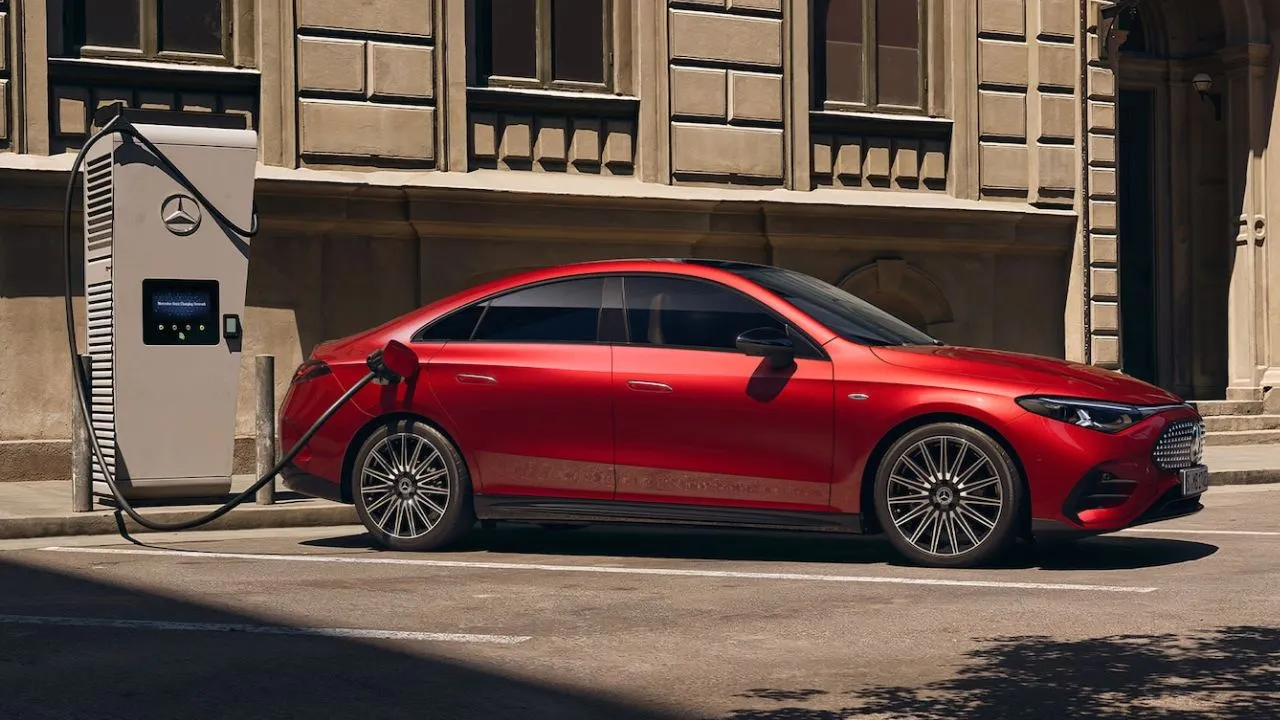
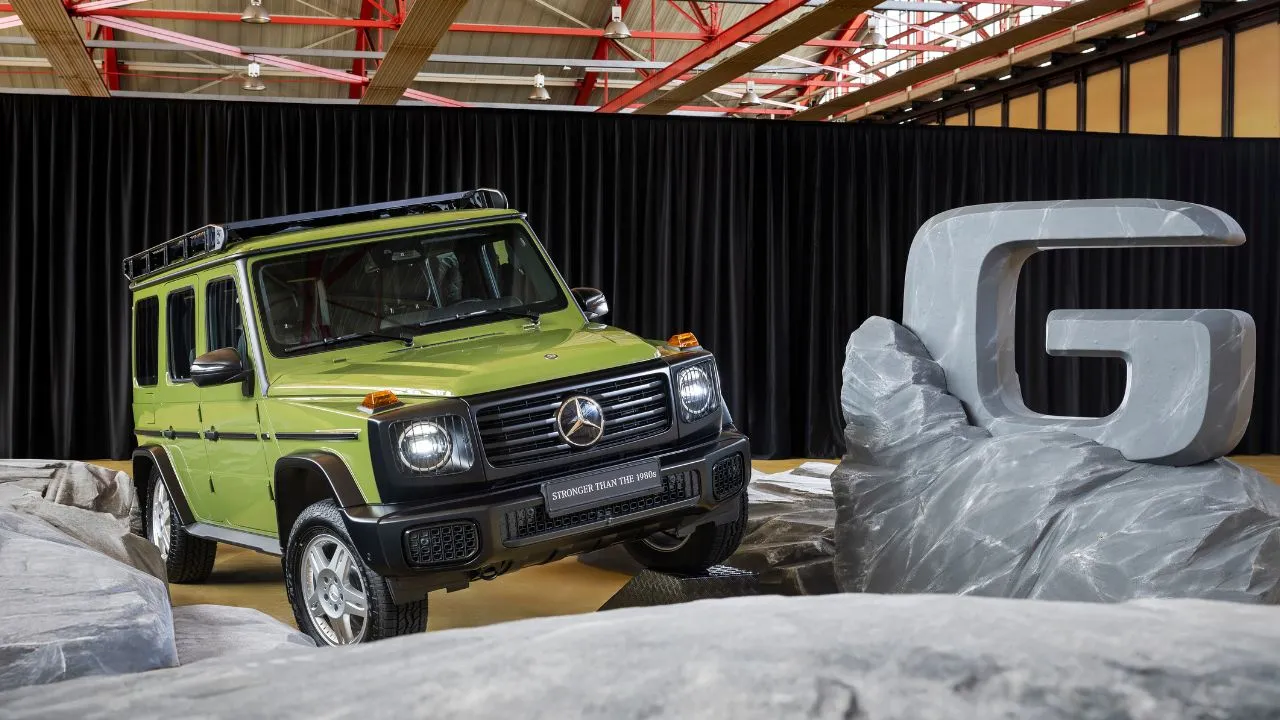
Write your Comment on